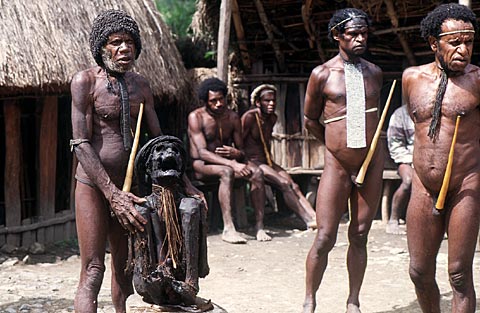PAPUAN INDIGENOUS TRIBES
There are over 312 separate tribes in West Papua, some of which are unidentified. The highland peoples of Papua live in the middle hilly region and tend pigs and grow sweet potatoes. The lowland peoples are hunters who make their living in marshy areas.
The several tribal languages spoken in Papua New Guinea range from similar to completely different. The inhabitants are not of the same ethnicity as the Indonesians who rule their nation.
Under the Indonesian occupation, which started in 1963, all of the Papuan peoples have experienced severe suffering.
The Indonesian army has a long history of violating the Papuans' human rights, and its bigoted soldiers frequently treat them as little more than animals.
About 40 unidentified tribes have been residing in West Papua in recent years. Many of these tribes make the conscious decision to avoid interaction with outsiders.
As a result, hardly much is known about them. These tribes are located in West Papua's inaccessible jungles. Diseases from careless tourists, military repression, invasion by miners, plantation owners, loggers, and other people looking for their lands' natural resources are all threats to the unnamed tribes.
West Papua is notorious for its abuse of human rights and for the pervasive racism that can be found there. People from tribes are typically not in contact with the outside world and are seen to be filthy and "stone-age."
The racist troops there abuse or even kill several unidentified tribes. Even if conditions are not ideal, the tribes know what is best for them and choose to live in isolation. They have specialized knowledge of the flora and animals in their area.
Their diversity demonstrates the viability of many ways of life. They have lived a style of life that we modern-day people can neither fathom nor have ever experienced.
The majority of Papuans work in agriculture (including forestry and fishing). Additionally crucial are rice, sweet potatoes, soybeans, corn, green beans, and peanuts.




0 Komentar